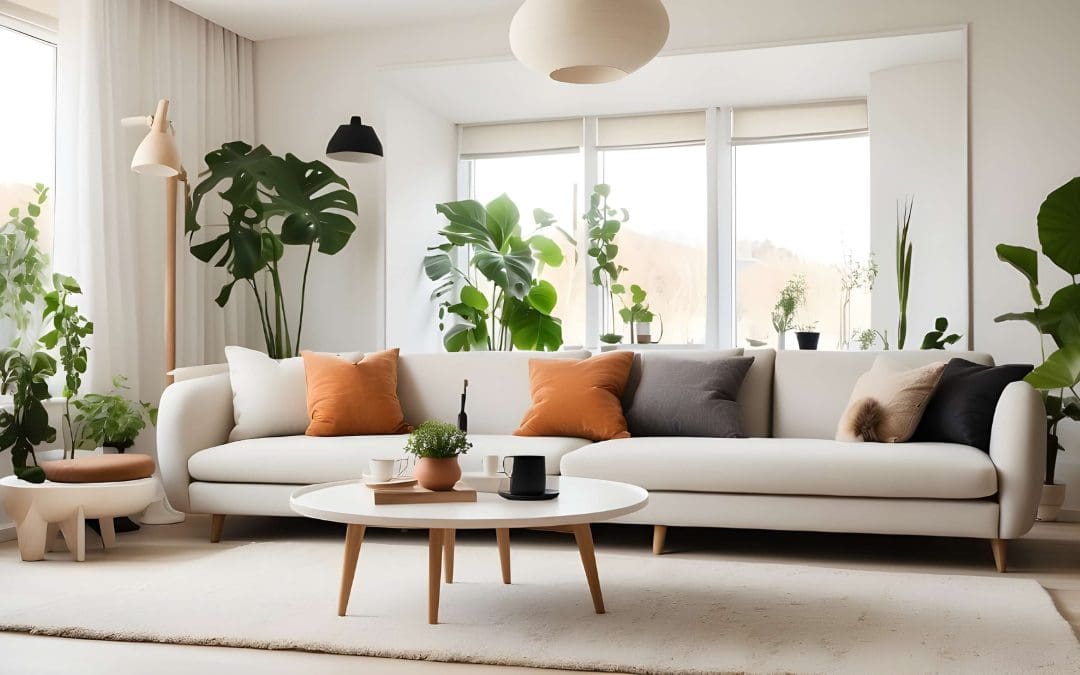Houseplants aren’t a trend—they’re a timeless addition to any home that brings beauty and vitality to your living space. Integrating houseplants into your home decor will refresh and energize your surroundings, creating a serene and inviting atmosphere. Whether you’re a seasoned plant lover or a newcomer, here’s a comprehensive guide to decorating with houseplants.
Understanding the Benefits of Decorating with Houseplants
Houseplants offer aesthetic appeal and contribute to a healthier indoor environment by improving air quality and increasing humidity levels. Plants like peace lilies and spider plants are known for their air-purifying qualities, while others, such as ferns, help maintain moisture in the air. The presence of greenery has been linked to reduced stress and enhanced well-being. By incorporating houseplants into your decor, you enhance the visual appeal of your space while promoting a healthier, more relaxing environment.
Choosing the Right Plants for Your Space
Selecting the appropriate plants for your home involves considering light conditions, space, and maintenance levels. Bright, sunny rooms are ideal for succulents, cacti, and rubber plants. On the other hand, low-light areas benefit from hardy plants such as snake plants and pothos. Think about each plant’s growth habits and how they will fit into your decor. Hanging plants, for example, are a great way to utilize vertical space, while large, leafy plants serve as striking focal points in corners or near windows.
Creating a Cohesive Look When Decorating with Houseplants
To achieve a cohesive look with houseplants, consider the overall theme of your decor. If your style leans toward modern minimalism, opt for sleek, contemporary planters and choose plants with clean lines and geometric shapes. For a bohemian vibe, embrace a mix of eclectic planters and lush, cascading plants. Incorporating plants into various design elements, such as shelves, mantels, and side tables, enhance your home’s aesthetic while maintaining harmony.
Displaying Plants with Style
How you display your plants makes an impact on your home’s decor. Use a variety of containers, including pots, hanging baskets, and decorative trays, to add visual interest. Plant stands and shelves elevate plants and make them more prominent. When arranging plants, group them in odd numbers to create a more natural and appealing arrangement. Incorporate plants at different heights to add dimension to your space. Don’t shy away from mixing different types of plants, but aim for a balanced composition that complements your existing decor.
Maintaining Your Plants
Caring for houseplants is essential to keeping them vibrant and healthy. Each plant has specific needs regarding light, water, and soil. Be sure to research the requirements of each plant species you have. Regular watering, appropriate light exposure, and occasional fertilizing will keep your plants in good shape. Periodic pruning and repotting help manage growth and prevent overcrowding.
Incorporating houseplants into your home decor is an excellent way to enhance the beauty and atmosphere of your space. Embrace the ease of decorating with houseplants and enjoy the fresh, lively energy they bring to your home.
Decorating with Houseplants FAQs
How do I know how much light my plants need?
Most houseplants come with specific care instructions regarding light requirements. Observe your plant’s response to the light in your home and adjust its placement if necessary. Generally, plants that need bright light will thrive near windows, while low-light plants are better suited for shaded areas.
Can I mix different types of plants in the same pot?
Yes, you can mix different types of plants in the same pot, but make sure their care requirements are similar. This creates a lush, diverse look and serves as a striking design element. The plants should have enough space to grow so their roots don’t compete too much.
How often should I water my houseplants?
Watering frequency varies depending on the plant species, pot size, and environmental conditions. A good rule of thumb is to check the soil moisture regularly. Most houseplants prefer to dry out slightly between waterings. Overwatering can be as harmful as underwatering, so make sure your pots have good drainage.
What should I do if my plant starts to look unhealthy?
Identify the problem by checking for common issues such as pests, diseases, or improper care. Adjust watering habits, light conditions, or soil as needed. If the problem persists, try repotting or seeking advice from a plant specialist to address specific concerns.
Golden Rule Home Inspections offers inspection services for customers in Lee, Collier, and Charlotte Counties. Contact us to request an appointment.

